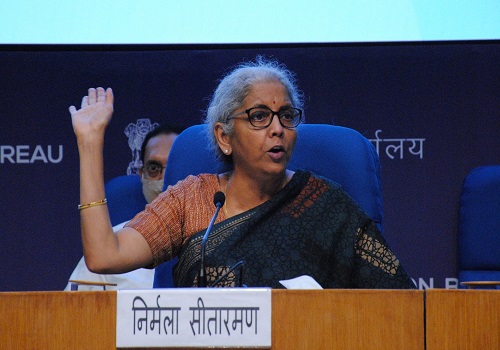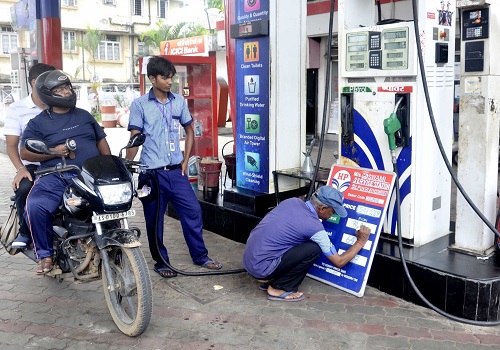Motor TP insurance: Administered price, long term cover vs deregulated price, one year cover

Follow us Now on Telegram ! Get daily 10 - 12 important updates on Business, Finance and Investment. Join our Telegram Channel
The Indian general insurance industry is divided on the aspect of long term versus one year motor third party risk cover and its pricing mode.
However, they are unanimous in their view that the third party insurance should be under them and not with the central government or administered as a pool.
Vehicle insurance policies are two parts -- own damage (insurance for the vehicle against damage, theft) and third party liability (liability for third parties).
The third party insurance cover is mandatory whereas the insurance cover for vehicle damage is not mandatory. The premium is fixed by Insurance Regulatory and Development Authority of India (IRDAI).
The general insurer's role in designing the risk cover, promoting it, and fixing the premium is almost zero.
"I am for the deregulation of the third party premium rates. The premium rate is not administered one in major countries," Varun Dua, Managing Director and CEO, Acko General Insurance Limited, told IANS.
Like him, many CEO when asked by IANS agree for deregulation of premium rates but strangely that is not happening.
Even after two decades after liberalisation of the sector citing various reasons including reduction in premium, insurers seem to want the price to be administered with yearly upward revision and not as per their claims experience.
Nearly 40 per cent of the general insurance business is from the motor insurance vertical and a major portion of that from third party risk cover, insurers are not enthusiastic about any changes resulting in lower premium and investment income.
Contrary to the claims made by the general insurers that they are incurring huge losses under the motor portfolio, the numbers as per the Insurance Information Bureau of India (IIB) study shows the contrary.
In its annual report on motor insurance for the fiscal 2018-19, the IIB said a sum of Rs.35,519 crore of motor claims - towards vehicle damage (Rs.18,262 crore) and third party liability (Rs.14,257 crore) were settled during 2018-19- while the gross underwritten premium was Rs.64,522.35 crore.
According to the report, the average settlement amount for death claims during fiscal 2018-19 was Rs. 901,207 and for injury claims it was Rs. 251,094.
The industry players also claim that a large number of vehicles run on the roads without third party insurance.
However, they do not have any answer when asked how that impacts them as they pay claims only on those policies issued by them and it is for the police to penalise the violators.
Industry players say they bring in efficiency in third party loss management when queried about insurers being freed of third party insurance in favour of the central government or administered as a pool.
"The insurer is bringing in expertise and efficiency in loss administration and fraud control. At the same time, claims administration requires a lot of manpower and infrastructure which has already been set up and improved by various insurers," Adarsh Agarwal, Appointed Actuary, Go Digit General Insurance told IANS.
According to him, a policyholder decides on the mode of claim for vehicle damage - whether under own damage part or getting into an arbitration for a third party claim under a third party property damage clause- separating the two may put him into difficulty.
Unless there is a process advantage that speeds up the third party claims with the judiciary involved, Agarwal added.
"One cannot wish away the role of insurers. They ensure easy access, availability of such insurance products which cannot be replicated by an already overburdened government," R. Raghavan, former General Manager of General Insurance Corporation of India (GIC Re) and founder CEO of Insurance Information Bureau of India (IIB) told IANS.
Insurers are well equipped to handle the stretched claims process in Motor Accident Claims Tribunals and subsequent litigation, he added.
Raghavan said, though IRDAI still keeps finalising the premium rates, the insurers supply necessary data for the actuarial pricing process.
On the point of long term motor third party policy Raghavan said: "It is in the interest of the society at large, for insurance terms to be longer in duration. It also helps insurers to balance their books towards making adequate provision for such long tail liabilities. Portability may effectively undo this equity and also lead to wild goose chase in pinning the right insurer for payment. An insurer with a multi year commitment will work on price efficiency too," Raghavan said.
Differing on that Agarwal said: "Long term policies have a twofold problem. A customer is encouraged to stick to one company despite the service quality they get from the current insurer as changing the insurer has an inherent inertia mid-way. Secondly, accounting the spare portion and labour cost for a longer term, given the inflation, is tricky and not ideal for the general insurance industry."
"If one makes non-life insurance a long-term contract, the capital needs, provisioning norms and others would kick in. How it would impact an insurer in the future as motor third party claims are long-tailed ones is not known now," and industry official told IANS preferring anonymity.
Locking in a policyholder for five long years with one insurer also makes the playing field anti-competitive and anti-policyholder.
"The vehicle dealers will have an upper hand. They will demand higher compensation from the insurers. Already dealers are selling only policies of those insurers from whom they get higher commissions and other perks," an industry official told IANS.












 320-x-100_uti_gold.jpg" alt="Advertisement">
320-x-100_uti_gold.jpg" alt="Advertisement">












